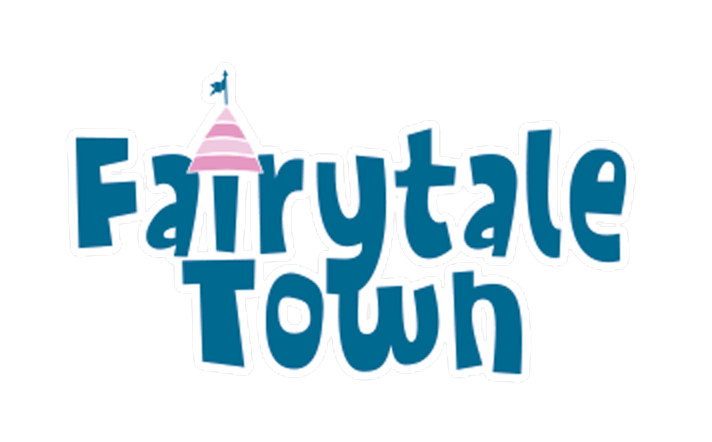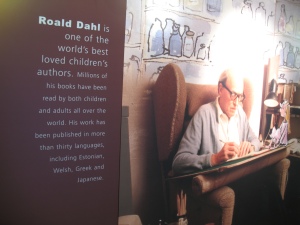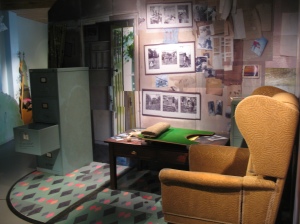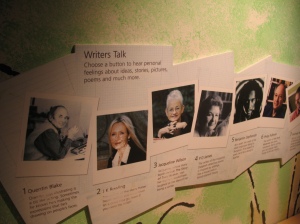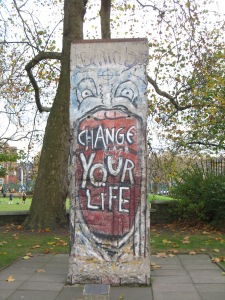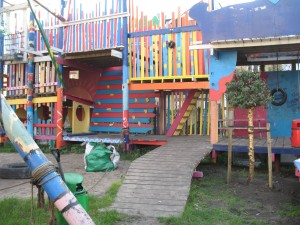City Farms
In the shadows of skyscrapers sheep are grazing. In the rubble of construction zones gardens flourish. London’s City Farms make it possible for urban children to see how food grows, and to connect with farm animals and nature. There are about a dozen City Farms throughout London. I visited a couple.
Mud Chute Park and Farm sits between the posh high-rises of Canary Wharf’s financial district and the transient neighborhood along the river Thames. This is not your well-manicured English park. It is natural and unruly. The 32 acre green has an equestrian center, chickens, ducks, pigs, sheep, community gardens, a restaurant, open fields and football pitches (aka soccer fields). The park is open to all, and children and adults alike can wander in the fields – in fact, they can wander in the very same fields the sheep graze in! Who knew humans and farm animals could handle close contact like this?!
Across town, the Hackney City Farm also offers children the chance to grow food and interact with animals. Though smaller in size, the farm delivers very unique learning programs. Bicycle maintenance, beekeeping and, yes, basket weaving, are among their course offerings. How cool to be able to learn a trade before you’re 12! The Farm also offers school workshops on the chicken lifecycle, growing food, bike power and creative recycling. Brilliant!
London is famous for its cultural amenities and everyone has easy access to the arts and parks. Its City Farms aren’t as prominent, but they are just as important. Connecting urban children with agriculture and rural experiences makes them more aware of the world around them – and may even provide them with a lucrative trade when they grow up!
Whizzbanging Writers
It’s been a whizzbanging week full of inspiration from books and authors.
I began the week with a visit to the Southbank Centre to see children’s book author Frank Cotrell Boyce read from his new book, The Unforgotten Coat. The book tells the story of two brothers from Mongolia, and their immersion into the little town of Bootle, England. The brothers’ new school mates are fascinated by their nomadic life in Mongolia and with the special coats they have. After the family is taken away in the dead of night, the students discover a coat is left behind in the classroom. It remains hanging there and serves as an ongoing reminder of the brothers.
About 100 people came to presentation. Boyce read from the book and then opened up a dialogue with the audience. The children in the audience were well-familiar with his other books and asked a ton of questions – everything from what books he read as a child to where he found inspiration for his characters. Like his books, Boyce was warm, funny and thoughtful. He made a point to talk about the importance of reading for pleasure, and shared how meaningful books were to his life. He puts his money where his mouth is – he wrote the book to support The Reader Organization, a charity and social enterprise dedicated to making it possible for people of all ages, backgrounds and abilities to enjoy and engage in reading.
A few days later I headed up to Great Missenden to visit the Roald Dahl Museum and Story Centre. What a place! Full of energy, the Museum not only tells the tale of Roald Dahl and his books, it also inspires children to generate their own stories. The Galleries offer dynamic exhibitions about Dahl’s life and books. Miss Honey’s Classroom offers space for school children to learn about character, plot and word play. The Story Centre provides children with places to devise and record their own stories. Bags of props, costumes, pencils and paper are throughout the facility to spark and capture ideas. The Museum makes excellent use of technology to impart information, inspire stories and record them. You could listen to soundtracks of authors talking about how they wrote, you could record your own story ideas and play them back, and you could use props to film your story. The Story Centre also houses a replica of Dahl’s famous writing hut so you could see how the master wrote his books. The Museum recently acquired Dahl’s actual writing hut, and will be under renovation this winter to incorporate it into the facility.
The Museum and Story Centre also encourages its audience to wander through the town of Great Missenden and visit sites that Dahl frequented. A Village Trail takes you to the library, post office, train station and other buildings that provided inspiration for settings in Dahl’s books. A Countryside Trail leads you through fields and woods that are featured in many of his stories. The trails are nearly as inspiring as the museum and the man.
Saturday morning, I headed to the National Theatre to see a talk about the great Irish playwright Sean O’Casey. The Abby Theatre’s production of Juno and the Paycock is now at the National, and O’Casey’s daughter Shivaun, the Abby’s archivist Mairead Delaney, and playwright Frank McGuinness were on hand to discuss his work and life with moderator James Naughie. Actors from the Abby were also there to perform selections of his work. The audience of 300 or so got to hear about O’Casey the man, see play submission and box office records from the Abby’s archives (complete with scribbles from Yeats!), and a working script from The Plough and the Stars. The 90-minute program ended with a recording of O’Casey himself, speaking on his views of theatre. To him, theatre should encapsulate all the arts – writing, music, design, architecture and painting – exactly what his plays do.
The audience knew the writer and his works, and asked provoking questions about why he left Ireland, his relationship with Yeats, how he drew inspiration from the struggles of his time, and how he dealt with criticism from his contemporaries for his portrayal of it. Fascinating stuff.
Present and past, writers have been capturing the world we live in so we can better see ourselves – or creating new worlds so we can gain fresh perspectives on ourselves. Some record the words heard around them to find sense and meaning during chaotic times. Others make up words to illustrate the new worlds they create. Either way, it’s captivating and whacktastic!
Children and War
It is difficult to ignore the effects of war in London. The bombings during World War II have left their marks. And then there’s the Imperial War Museum and the hit production War Horse.
The imposing building of the Imperial War Museum (the former site of Beldam mental hospital) houses permanent exhibitions of tanks, airplanes, guns and helicopters. It has a Foxhole experience that you climb into to feel what it was like to be a soldier in World War I and a Blitz experience where you can feel what it was like to like to be in London during World War II. These personal experiences are eye-opening for Americans who have not had wars of this magnitude on their soil. The powerful Holocaust exhibit also creates empathy by showing personal items of victims and video recordings of survivors sharing their war experiences. Several of the exhibits are not recommended for children under age 13.

I was fortunate to spend some time with educators at the Museum. The Learning Department has Family Education programs for out-of-school offerings and Formal Education programs that serve their large school audience. Education programs on the Holocaust exhibit have been developed for secondary school children (Grades 9-12) and those programs alone serve more than 30,000 students a year. The Children’s War exhibit is geared more for the primary school children (Grades 4-8).
The Learning Department is doing its job well. The children I saw at the Museum were interested and engaged in the exhibits, and took the subject matter seriously.
I also was fortunate to see the brilliant production of War Horse. Based on Michael Morpurgo’s children’s book, War Horse is an incredibly moving story about a horse that is thrust into the chaos of the First World War – the last war to use horses as the major form of transport. The story shows the strong bond between the horse Joey and his young master Albert. When Albert’s father sells Joey to the army, Albert promises they will be united. The action follows both of their lives as they maneuver through the trenches, barbed wire and madness of war.
All the horses and farm animals in the production are portrayed by puppets and puppeteers. The puppets were fascinating pieces of artistry and engineering. The adult Joey had at least three people operating and voicing him. After a while you either stopped noticing the puppeteers, or you began watching them closely to see how they were moving this amazing piece of machinery. It made the animal characters no less real to see the workings behind their anguish and joy.
War Horse has been included in children’s libraries and bookstores since it was published in 1982. The play has been in London for many years, opening at the National Theatre in 2007 and playing at the New London Theatre since 2009. I understand that Steven Spielberg is now making a major motion picture of War Horse.
It’s always good to see a children’s book on the world stage. And it is positive to see that children are also on the world stage, learning about the foibles and follies of our past.
Play Matters

Free play is well-organized here in London and the UK. (I know, how British!) There are numerous organizations to further the cause, influence and establish policy, research and measure outcomes, and provide training on best-practices for playworkers.
Play England is a national organization that provides research, certification, and advocacy for the sector, and it has counterparts in Scotland, Wales and Northern Ireland. London Play is a local organization that does the same at the city level. Playwork London provides hands on training and education for play workers. Smaller grass roots organizations like Ludemos and Play Association of Tower Hamlets (PATH) also provide training and networking opportunities at the community level.
This month I attended Play England’s Annual Meeting and PATH’s Annual East London Play Conference – which I learned about through the London Play and Playwork London’s web sites. Both were enlightening and jam-packed with information and inspiration. A common thread was the dire cuts made to children’s play facilities and programs. (From what I can tell, funds have been reduced by two-thirds.) This coupled with the overall economic downturn have led to a significant reduction in the provision of play opportunities for children. All are working to remedy the situation and ensure England’s children have safe places to play.
Play England’s Annual Meeting took place is a funky old building near their headquarters in London. The first part of the meeting was dedicated to business and governance issues. The latter part of the meeting offered presentations on recent research, budget cuts and their effect on the sector, and a new program on nature play. The research the organization offers is impressive and valuable as it both quantifies and qualifies the importance of play. One research briefing detailed how police and safety officers can work with play providers to improve children’s safety and community cohesion. Another research briefing for childcare practitioners identified factors necessary for physically active play. Yet another for health care providers showed the link between play and good health. (In fact some communities now have ‘play on prescription.’) Recent research findings show that just 21 percent of children play outdoors near their home compared to 71 percent of their parents when they were children.
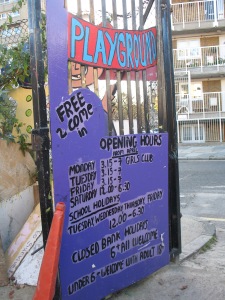
- Children have the right to play (as enshrined in Article 31 of the UN Convention on the Rights of the Child).
- Every child needs time and space to play.
- Adults should let children play (i.e., create opportunities, allow free time, allow independent play with friends – in and out of the home).
- Children should be able to play freely in their local areas.
- Children value and benefit from staffed play provision.
- Children’s play is enriched by skilled playworkers.
- Children need time and space to play at school as young children learn best through play and older children’s learning is enriched and supported through play.
- Children sometimes need extra support to enjoy their right to play (i.e., they may need some extra help to find play opportunities if they are living in a new environment, are away from home, etc.).
It’s easy to get behind something as basic as a child’s right to play. It’s a little harder to implement, especially when funding and resources are so tight. England Play is now part of the National Children’s Bureau, a leading children’s charity. The organization has decided to move towards becoming an independent charity, a transition that will allow it to raise and allocate more funding for play. A big step for free play.
The Annual East London Conference took place in the offices of Amnesty International, a humbling location. The morning session offered three brilliant presentations. The first was a keynote address by play guru Bob Hughes. He discussed two questions, ‘What is Playwork?’ and ‘Does Playwork Work?’ While playwork is often defined as providing for and working with children at play, Hughes thinks it is more about creating environments rather than managing children. He laid out the essential elements of a positive play environment. It has to be large enough for a child to be able to run in. It has to have some private or secret areas where children can be alone (or think they are). It must be malleable so it can be changed fairly frequently to offer new experiences. It must use all four elements (earth, fire, water, air) in its features and be shared with other species (insects, birds, spiders, etc.). Finally, a good play environment is child-intuitive; something a child will be drawn to and interact with – without adult direction. His answer to the answer to the question ‘Does Playwork Work?’ was yes – if the space is right.
The second presentation was from a grassroots organization called Bristol Street Play. A couple of moms remembered playing in the street with neighborhood kids when they were young and set out to make it possible for their children to have the same experience. They organized a play day on their street. The street was blocked off and children and families had the opportunity for free play in the street. Not only did they have a safe place to play just outside their doorstep, the neighbors got to know each other better. The day was so successful they organized more street play days. Other neighborhoods noticed what was going on and they began to organize play days in their streets as well. As a result, Bristol now has an ordinance that allows neighborhoods to regularly block off streets for play. It’s a fantastic model of how communities can work together to create safe places for play.

In the afternoon break-out sessions were held to learn more from each of the presentors, and a trip was taken to a London City Farm to learn how to blacksmith. It was a spectacular ending to a remarkable day. (Plus, it inspired me to pursue my desire to weld!)
Whenever I am around play professionals I am struck by how serious they are. For these folks, play is no laughing matter or a frivolous option. For those who work in the profession it is more than a job, it is a calling. They are like civil rights activists working to ensure that a marginalized segment of society can exercise their rights. In this case it is a child’s right to play. I salute them.
Stories at Play

Hootah’s Space Ship
Once upon a time in a galaxy not so far away, Hootah lived on the planet Squiddly-Diddley. Each morning he would wake up and eat a story for breakfast. He would look out the window and see storybook characters and watch flowers growing larger and brighter as the birds read stories to them. Hootah was very happy on Squiggly-Diddley until one day… Hootah woke up and there were no stories! He had no breakfast. He looked out the window and saw… nothing! So Hootah took his spaceship out of the garage and made his way to planet Earth where he heard children knew a lot of stories.

The Story Starts at Discover Chilren’s Story Centre!
Luckily, Hootah’s space ship landed in the back garden of the Discover Children’s Story Center, London’s only children’s museum. Unlike the American model of cross-curricular children’s museums, Discover focuses entirely on literacy. School groups are the primary audience on weekdays. Children are told the story of Hootah, then play and explore in the museum, and finally a staff member (called a Story Builder) leads them through writing the rest of the story. At the end of the session they make puppet characters from the story and hang them on a story tree. After the school sessions are over, Discover opens its doors to the general public. It is open weekends to the public as well.

Story Box Area
Now eight years old, Discover reaches about 60,000 people a year through its on-site and outreach programs. The facility has two levels and an outdoor garden area that includes the remnants of Hootah’s spaceship. The ground floor houses its permanent collection of exhibits. The basement is home to temporary exhibits that change annually. This year the exhibit is ‘Monsterville.’ Next year’s will be Super Heroes.
Both the outdoor and indoor areas include climbing and sliding structures as well as story and literacy-building features. There are nooks, soft areas and books in every corner of the museum. There are plenty of places for writing, drawing, acting out and recording stories also. In one area there are large sheets of paper to write on, tear off and take home. In another area you can write on the smooth surfaces of sets and mirrors. There are several areas to pull together costumes and props to act out and imagine stories. There are stations throughout the museum where children can record stories they are imagining. The stations have three buttons labeled beginning, middle and end. Children press the button to record segments of their stories and then they can play them back to hear what they’ve created.

A Story Recorder
In addition to their wonderful facility, Discover has developed some interesting programs. Events are scheduled every weekend to keep the museum fresh and relevant, and compete in the large marketplace of London. The events feature author or illustrator presentations and storytelling. Their outreach program goes out into the community to record stories of residents and the many cultures they come from. They created a couple of CDs with these stories which feature both children and adults sharing stories.

In the Garden
One of the strengths of Discover is that they serve the community they set out to serve, namely the lower-income schools and residents of the area. Discover is located in Stratford which is the area of London where the 2012 Olympics will take place. The Olympic Village and Venues as well as a huge new shopping mall are transforming the neighborhood. Discover will be part of the transformation – in fact, it has been commissioned to create stories during the Olympics.
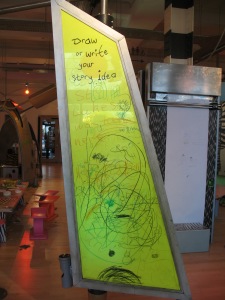
Writing Board
While speaking to their stellar executive director, I learned there are many similarities between Fairytale Town and Discover. We are both literacy and arts based charitable organizations. We both earn the majority of our revenue through admissions and work hard to raise money to fill the gap. We have similar-sized boards and staffs who are involved and dedicated. We each have limited space and resources to do the things we do. And we both create magical memories for those who visit us and a common culture for our communities.
While Discover is currently the only children’s museum in London, another one is in the works, and there is the venerable V & A Museum of Childhood. A separate wing of the opulent Victoria & Albert Museum, the Museum of Childhood tells the story of childhood from Victorian times to the present with displays of toys, games and child-care items.

Museum of Childhood Exhibit
Wandering through their huge permanent collection I saw everything from hand-made zoetropes and doll houses to board games and super-hero figures; and from bassinettes and breast pumps to prams and cribs. The museum also has temporary exhibits; the one currently on display is ‘Magic Worlds.’ It incorporates visual displays of books and information about genres and authors with play-oriented and hands-on activities. For example the area on the story of ‘Alice in Wonderland’ has a tunnel for kids to crawl through to the next exhibit on ‘Hansel and Gretel’ and vice versa. In the area on Shakespeare there are costumes children can use to become witches and props they can use to add ingredients (like eye of newt) to a cauldron.

High Chair Display
The adults I saw there were having a good time reminiscing about their own childhoods while exploring the exhibits, and the children I saw were so engaged in the hands on activities that they didn’t want to leave. The Museum of Childhood clearly shows us that while times have changed, at least one thing has remained the same: children need to play.

Through the Looking Glass Tunnel
The importance of play is recognized here, and those who provide it are pretty well-organized. I was able to attend the Annual Meeting of Play England, a national association of play organizations, and the annual Play Conference offered by the Play Association of Tower Hamlets, a community-based group of adventure playgrounds and playworkers. More on that later!
Demonstration and Remembrance
The demonstrations were well organized and the demonstrators well-behaved. The demonstration culminated at St. Paul’s Cathedral, where a different set of demonstrators had been camping out for the last few weeks, so we decided to go there as well. Again, the demonstrators were well organized and peaceful. Paths had been carved between the tents so people could easily make their way to the cathedral. An area was set up for information, and another area set up for contributions of food and clothing for the protestors. We climbed up the steps and into St. Paul’s as they were setting up for Evensong. The quiet of the church was an interesting contrast to the speeches and protest songs heard from the plaza outside. Both settings were peaceful and thought-provoking. It isn’t every day you see democracy in action, but last Wednesday I felt I did.
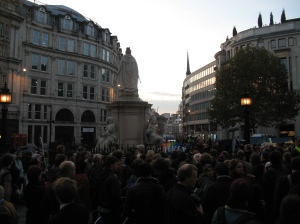

From what I understand, the red poppy became the symbol of Remembrance Day because they were the only flower that would grow in the blood-drenched battlefields after the Great War (WWI). But Londoners don’t need the poppy to remind them of the costs of war. The ruins of buildings hit during WWII and numerous war memorials stand as witness in various areas around town.
Havens for Play
Last week I had the opportunity to visit the Glamis Adventure Playground and Coram’s Fields. They are very different places, but both offer children a haven for play. (Please note all photos are from Coram’s Fields. I will add Glamis when I can take them – it was too dark when I was there.)

Glamis is located in East London. I took the Tube and an Overground train to get there. I debarked at the Shadwell station and took a short walk to Glamis Street. As I turned the corner I immediately saw the playground – a bright blaze of colors and an array of tall climbing structures. A child’s paradise in the middle of housing and businesses!
Opened in 1969, Glamis was one of the first adventure playgrounds in London. Due to funding cuts from the Greater London Council, the playground was closed in the late 1990s until a groundswell from the community led the Council to reinstitute it in 2004. The mission of the playground is to provide ‘a free Adventure play environment for lots of different children whilst encouraging child development; by placing children at the centre of what we do.’

Glamis is entirely outdoors and is open 50 weeks of the year. The playground is open from 3:15 to 7 PM on Monday, Tuesday and Friday, and from 12 to 6 PM on Saturday. There are extended hours for school breaks and holidays. Mondays are open for girls only. The facility offers a wide variety of play structures, climbing apparatus, a water feature, many swings, a small garden, and a fire pit.
I had the opportunity to meet two of the deputy directors of the playground. One had been with the organization for more than 10 years (and had attended it as a child also); the other for four years. Both were passionate about the facility and what it offered to the community. They have 700 children from age 6 to 16 who visit the playground regularly each year. The play that happens at the playground is initiated by the children themselves. If a child wants to build a garden, they rummage for tools and materials and build it; if they want to do artwork, the get materials from the art area and create away. All is done under the watchful eyes of the playworkers, but the kids take the lead and the adults help only when needed or required.

Each day they prepare hot food on the fire pit. All the food is vegetarian so that it complies with their community’s dietary requirements. The girls-only day was established to meet the needs of their community as well. The playground is situated in an area with a high Muslim population and the girls-only day was initially offered as a way to get more involvement from that community. They have found it to be effective – for all the girls in the community. In general, the playground attracts more boys than girls, so each Monday girls are free to play without being over-run by the boys.
The playground is funded largely by their local community council (similar to our city councils) as well as by donations and sponsorships. Like in the States, the economic downturn has taken its toll on children’s programs and playground funding has been cut. Glamis lost a few positions in the process, and were forced to go from six days of operation to the four they currently operate. Despite the difficulties, they are carrying on, determined to make Glamis an oasis for children, and the most exciting adventure playground in the city.

Coram’s Fields is another community gem located in the heart of Central London. The 200-year old facility has a rich history. Coram’s Fields was originally a hospital for deserted children. When Thomas Coram, a wealthy mariner, retired to London he was appalled by the extreme poverty he witnessed and the sight of babies being abandoned in the gutter. He enlisted the help of King George II to establish a home and hospital for the care and education of these deserted children. The premises first opened in 1741 and expanded in 1742. Now, 7 acres of this site are Coram’s Fields. Currently, Coram’s Fields contains a children’s center including a day nursery, a youth center, sports center, sports fields and park and playground space. (The Foundling Museum, with touching exhibits of the clothing and tokens left with the children, is located nearby.)
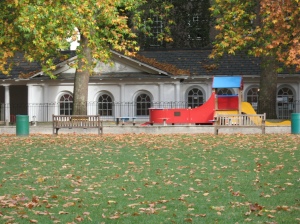
I stumbled upon Coram’s Fields one day as I was wandering the streets of London and heard the familiar sound of children playing and smelled the familiar scent of goats! Like Fairytale Town, adults may not enter Corman’s Fields without a child. Childless, I couldn’t visit that day, so I made arrangements to visit a few weeks later. As I made my way to the Fields again, I heard another familiar sound – the sound of leaf blowers, and saw a familiar sight – people setting up for an event. I checked in at the front gate and met with the deputy director for a tour and a visit.
Coram’s Fields is set up like a town square with buildings surrounding the play areas in the center. The buildings house the children’s and youth centers, offices, meeting rooms, café, animal pens and toilet rooms. The animal collection includes chickens, rabbits, guinea pigs, birds, sheep and goats. The playgrounds are broken into two areas, one for the under 5s and one for over 5s with a big grassy field in between. The under 5 area has many small play structures within a large sandbox. Bouncy animals, a water feature, play tables and climbing apparatus let young children build physical skills and confidence whilst engaging their imaginations with creative play – mostly with sand. The over 5 area includes two zip lines, numerous swings, a musical play area, balancing beams, and a large climbing structure with slides – plenty of activities to engage a child’s body, mind and imagination. Children of all ages explore both areas. The 10-year old I was watching had just as much fun making sand-cakes in the under 5 area as she did on the zip line in the over 5 space.

Admission to Coram’s Field is free of charge, and they are open daily except for December 25 and 26. It is the hub of the community and offers dance, yoga, music and sports lessons as well as meeting space for scouts, orchestras, dance clubs and other charities. It also offers outdoor festivals and events. (The event they were preparing for when I arrived was a fireworks display for Bonfire Night.) The activities they offer, particularly in the children and youth centers, are curriculum based. They have regular inspections of the playground, animals and children’s centers. A total of 30 staff, comprised mostly of child care workers as well as 5 groundskeepers, 3 sports coordinators, and 5 administrators implement the programs and operate the property. I was extremely impressed by the facility, staff and services they offered.
While not as bad as it was hundreds of years ago when Coram began the hospital, the community surrounding the Fields is still pretty impoverished with 30 percent living below the poverty line. Not surprisingly, funding is one of the Fields’ biggest challenges. While they have many funding streams including the borough council (our city council), sport field rentals, and charitable gifts, the economic downturn and changes in how the council funds children’s programs have had their impact. In true British fashion, the good people at Coram’s Fields keep calm and carry on, providing excellent services to their community and remaining a safe haven for children. Mr. Coram would be proud that his vision of a place for ‘maintenance and education’ of children lives on.
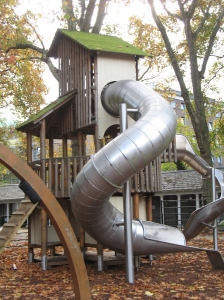
Policies around funding for children’s programs and education in general have been highlighted in the news lately. A demonstration happened yesterday and culminated at St. Paul’s Cathedral where the tent city is set up. More on that next round.








